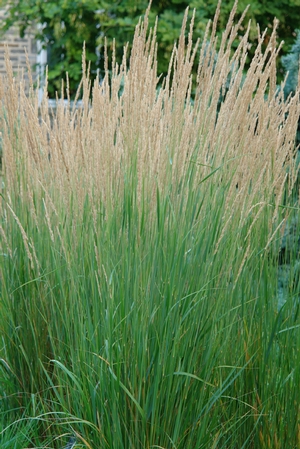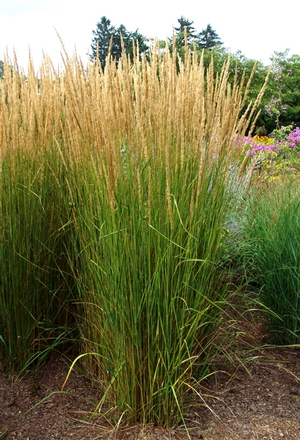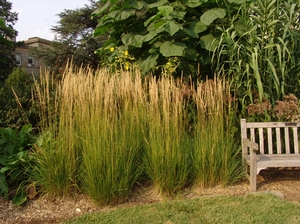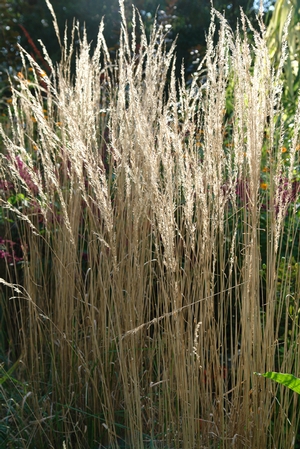Calamagrostis × acutiflora 'Karl Foerster'
Common: feather reed grassCalamagrostis x acutiflora 'Karl Foerster' LP50 - 50 per flat
- Height: 4'-5'
- Spread: 2'
- Spacing: 18"-24"
- Hardiness Zone(s): 5-9


Calamagrostis x acutiflora 'Karl Foerster' LP50 - 50 per flat



One of the most popular garden grasses in the world, 'Karl Foerster' is known for its ease of culture, tidy vertical habit and beautiful feathery blooms. In mid summer flowers open a creamy white tinged with pink. As they age they become narrow plumes of golden straw and last well into winter.
Calamagrostis prefers somewhat fertile, moist, well-drained soils, but can tolerate heavy clay soils. Propagate by dividision of clumps every few years and cutstems down to the ground in early spring before new growth occurs. This selection is sterile, so mass planting can be done without fear of invasiveness. Most effective as a vertical accent in the garden, as a screen or in containers.
The Perennial Plant Association's 2001 Perennial Plant of the Year®
One of the most popular garden grasses in the world, Calamagrostis × acutiflora 'Karl Foerster' is known for its ease of culture, tidy vertical habit and beautiful feathery blooms. In mid summer flowers open a creamy white tinged with pink. As they age they become narrow plumes of golden straw and last well into winter. In 2001, it was the Perennial Plant Association’s Perennial Plant of the Year™. It is a hybrid cross between two species native to Europe and Asia, naturally occurring in some parts of Europe. Karl Foerster was the German nurseryman who found the plant in Hamburg Botanical Garden in 1930.
Calamagrostis prefers somewhat fertile, moist, well-drained soils, but can tolerate heavy clay soils. Fertilizer may be required to produce maximum height while low fertility will result in shorter plants. It is usually free of serious disease or insect problems although a foliar rust disease can occur in wet summers in situations with poor air circulation. Little maintenance is required except to cut back the stems to about 6 inches in late winter or early spring. In areas with mild winters the foliage may remain evergreen. This ornamental grass is a cool-season grass, which allows planting or transplanting in spring or fall. Sterility eliminates any chance of this cultivar becoming an invasive plant or create unwanted seedlings in the garden.
Calamagrostis × acutiflora 'Karl Foerster' is ubiqutous in the landscape, standing tall and proud and lending seasonal structure to a planting design. We have tried growing it in part-shade and find it loses its form in such conditions, becoming floppy and open in habit. In addition to a landscape setting, feather reed grass can be used as a screen, in a narrow perennial border, and as a container plant.